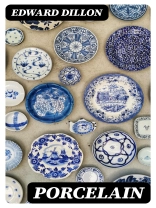In Edward Dillon’s ‘Porcelain, ‘ the reader is taken on a journey through the intricacies of a dysfunctional family. The novel delves deep into the complexities of family relationships, exploring themes of love, betrayal, and forgiveness. Dillon’s writing style is characterized by its poignant prose and vivid imagery, allowing the reader to truly immerse themselves in the lives of the characters. Set in a small town in New England, the book captures the essence of small-town life and the secrets that lie beneath the surface. The narrative unfolds in a non-linear fashion, revealing shocking truths and hidden motivations as the story progresses. With its lyrical language and compelling storyline, ‘Porcelain’ is a captivating read that will leave a lasting impression on the reader. Edward Dillon, a renowned author known for his insightful exploration of human emotions, drew inspiration from his own personal experiences to pen ‘Porcelain.’ His keen understanding of human nature is evident in the way he crafts his characters and weaves their stories together. Dillon’s writing is both thought-provoking and emotionally resonant, making ‘Porcelain’ a standout novel in contemporary literature. I highly recommend ‘Porcelain’ to readers who enjoy literary fiction that delves into the complexities of human relationships. Dillon’s skillful storytelling and profound insights make this book a must-read for anyone looking for a thought-provoking and emotionally impactful literary experience.
关于作者
Edward Dillon is a contemporary author whose literary work ‘Porcelain’ has contributed to the field of modern fiction. While there may exist multiple individuals by the same name, without specific details to distinguish this particular Edward Dillon, one can only speculate on the biographical details relevant to this author. ‘Porcelain, ‘ by its title, suggests a focus on themes of fragility, beauty, and perhaps the human condition, often mirrored by the delicate nature of the material itself. Dillon’s narrative style and thematic exploration, thus inferred, might resonate with those of a reflective and subtle storytelling tradition. Readers may find his work interwoven with symbolic elements and characters that embody the intricate dance of strength and vulnerability. Unfortunately, due to a lack of comprehensive information about Dillon’s life, educational background, and the full spectrum of his written works, a detailed scholarly biography remains elusive. However, judging by his contribution through ‘Porcelain, ‘ it is evident that Edward Dillon crafts stories that invite introspection and emotional engagement, the hallmark of a writer dedicated to the art of nuanced literary creation. As more of his work comes to light, the literary community can look forward to a clearer picture of his stylistic imprints and thematic preferences.












